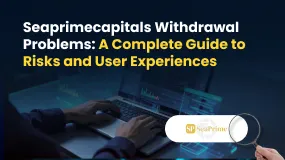简体中文
繁體中文
English
Pусский
日本語
ภาษาไทย
Tiếng Việt
Bahasa Indonesia
Español
हिन्दी
Filippiiniläinen
Français
Deutsch
Português
Türkçe
한국어
العربية
Learn This & Never Blow An Account Ever Again!
Abstract:The projected returns on a particular investment are weighed against the risk of loss using a mathematical formula known as the risk-reward ratio. Many traders may think that they have fully understood this concept but today’s article could shine a different light on this risk-reward concept like never before. Keep reading to learn more!

In the world of trading, the concept of risk and reward holds paramount importance, even more so than market analysis, as it determines the longevity and profitability of a trader's journey. Understanding the fundamental rule of the market, calculating risk per trade, and leveraging risk-to-reward ratios are crucial aspects that differentiate traders from mere gamblers, ultimately paving the way for consistent gains and avoiding catastrophic losses.
Before delving into the specifics of risk and reward, it is crucial to remember the fundamental rule of the market: “Each moment in the market is unique,” as emphasized in Mark Douglas's influential book, “Trading in the Zone.” Regardless of one's analytical prowess, the possibility of being wrong and losing trades always exists. Therefore, implementing proper risk management strategies is essential.

To begin, risk per trade must be calculated. Thinking in terms of percentages, rather than dollar amounts, in relation to the total account balance is crucial. Let's consider an example for clarity. Suppose you have a $1,000 trading account and decide to risk 3% per trade, which amounts to $30. If you enter a trade with a 30-pip stop loss and a 90-pip profit target (a 1:3 risk-to-reward ratio), calculating the appropriate lot size is crucial. With the allocated risk of $30, a lot size of 0.1 (where each pip is valued at $10) aligns with your risk management strategy. If the trade is successful, you stand to make $90.
The power of risk-to-reward ratios becomes even more evident when applied to different account sizes. Imagine you have a $100 trading account and wish to risk the same 3% per trade ($30). In this scenario, you opt for a tight 3-pip stop loss. As the stop loss is smaller, you can increase your lot size to 1. With a 90-pip profit target, the potential gain becomes a remarkable $900. This exemplifies the significance of aligning risk and reward ratios in pursuit of higher gains.
While the concept of calculating risk per trade may be understood by many traders, the key lies in realizing that the percentage risk remains fixed regardless of the stop loss distance. By implementing this approach consistently and seeking trades with favourable risk-to-reward ratios, traders can witness substantial account growth and achieve their financial goals.
In conclusion, successful trading revolves around the art of risk management and understanding the relationship between risk and reward. By calculating risk per trade, adhering to a predetermined risk percentage, and identifying favourable risk-to-reward ratios, traders can navigate the markets with confidence, ensuring their long-term survival and unlocking the potential for significant gains. Embrace the principles of risk management, and watch your trading journey transcend from one of uncertainty to one of consistent profitability.

Disclaimer:
The views in this article only represent the author's personal views, and do not constitute investment advice on this platform. This platform does not guarantee the accuracy, completeness and timeliness of the information in the article, and will not be liable for any loss caused by the use of or reliance on the information in the article.
Read more

Seaprimecapitals Withdrawal Problems: A Complete Guide to Risks and User Experiences
Worries about Seaprimecapitals withdrawal problems and possible Seaprimecapitals withdrawal delay are important for any trader. Being able to get your money quickly and reliably is the foundation of trust between a trader and their broker. When questions come up about this basic process, it's important to look into what's causing them. This guide will tackle these concerns head-on, giving you a clear, fact-based look at Seaprimecapitals' withdrawal processes, user experiences, and trading conditions. Most importantly, we'll connect these real-world issues to the single most important factor behind them: whether the broker is properly regulated. Understanding this connection is key to figuring out the real risk to your capital and making a smart decision.

iFX Brokers Review: Do Traders Face Withdrawal Issues, Deposit Credit Failures & Free Coupon Mess?
Have you had to pay several fees at iFX Brokers? Had your trading profit been transferred to a scamming website, causing you losses? Failed to receive withdrawals from your iFX Brokers trading account? Has your deposit failed to reflect in your trading account? Got deceived in the name of a free coupon? Did the broker officials not help you in resolving your queries? Your problems resonate with many of your fellow traders at iFX Brokers. In this iFX Brokers review article, we have explained these problems and attached traders’ screenshots. Read on!

NinjaTrader Exposed: Why Traders are Calling Out NinjaTrader’s Lifetime Plan & Chart Data
Did NinjaTrader onboard you in the name of the Lifetime Plan, but its ordinary customer service left you in a poor trading state? Do you witness price chart-related discrepancies on the NinjaTrader app? Did you have to go through numerous identity and address proof checks for account approval? These problems occupy much of the NinjaTrader review online. In this article, we have discussed these through complaint screenshots. Take a look!

Questrade Review Pros, Cons and Regulation
Is Questrade legit? Yes—CIRO regulated broker offering stocks, ETFs, forex, CFDs, bonds, and more with low fees and modern platforms.
WikiFX Broker
Latest News
Axi Review: A Data-Driven Analysis for Experienced Traders
INZO Regulation and Risk Assessment: A Data-Driven Analysis for Traders
GGCC Bonus and Promotions: A Data-Driven Analysis for Experienced Traders
Close Up With WikiFX —— Take A Close Look At Amillex
CapEx Spending On AI Is Masking Economic Weakness
Questrade Review Pros, Cons and Regulation
AccentForex Review: Is It Safe to Invest or Scam?
Cleveland Fed's Hammack supports keeping rates around current 'barely restrictive' level
Delayed September report shows U.S. added 119,000 jobs, more than expected; unemployment rate at 4.4%
The CMIA Capital Partners Scam That Cost a Remisier Almost Half a Million
Currency Calculator



